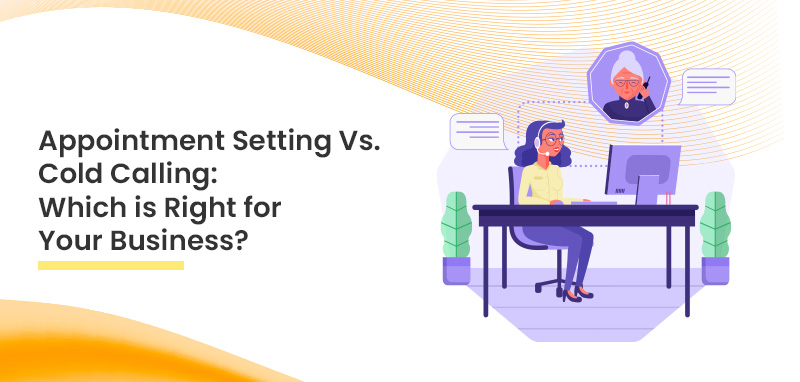Appointment Setting Vs. Cold Calling: Which is Right for Your Business?
In the world of sales and marketing, two techniques often come into play when aiming to connect with potential clients: appointment setting and cold calling. Both methods have their unique advantages and challenges, and choosing the right strategy can significantly impact your business's success. Understanding the nuances of each approach will help you determine which is best suited for your business goals, target audience, and resources.

Understanding Appointment Setting
Appointment setting involves scheduling a meeting or call with a prospect who has already shown some level of interest in your product or service. This technique often follows an initial contact or lead qualification process. The primary goal of appointment setting is to arrange a time for a more detailed discussion, product demonstration, or negotiation.
Pros of Appointment Setting:
Higher Engagement: Since prospects have already expressed interest, they are more likely to be engaged and open to discussions. This higher level of interest often results in more productive and meaningful conversations.
Tailored Approach: Appointment setting allows for a more personalized approach. Sales representatives can prepare for the meeting based on the prospect's needs and preferences, leading to a more relevant and effective pitch.
Better Relationship Building: Face-to-face meetings or scheduled calls create opportunities for relationship building. A personal interaction helps establish trust and rapport, which can be crucial for closing deals.
Cons of Appointment Setting:
Time-Consuming: The process of setting appointments can be time-consuming. It involves initial outreach, follow-up, and coordination to find a suitable time for both parties.
Limited Reach: Appointment setting typically targets a smaller, more qualified group of prospects. While this can be beneficial, it also means you might miss out on potential leads who are not yet on your radar.
Dependency on Lead Quality: The success of appointment setting depends heavily on the quality of leads. If your lead generation process is not robust, you may struggle with setting meaningful appointments.
Exploring Cold Calling
Cold calling is the practice of reaching out to potential clients who have not previously expressed interest in your product or service. This approach often involves making unsolicited calls to a list of prospects to generate interest and eventually secure a meeting or sale.
Pros of Cold Calling:
Broad Reach: Cold calling allows you to reach a wide audience. By contacting numerous prospects, you increase the chances of finding potential clients who may be interested in your offerings.
Immediate Feedback: Cold calling provides instant feedback. You can gauge a prospect's interest level and adjust your approach on the fly based on their responses.
Cost-Effective: Compared to other marketing methods, cold calling can be relatively cost-effective. It requires minimal investment in tools and resources, making it accessible for businesses with tight budgets.
Opportunity for Market Research: Cold calling can serve as a valuable tool for gathering information about market trends, customer preferences, and competitor activities.
Cons of Cold Calling:
Low Response Rates: Cold calling often yields lower response rates compared to other methods. Many prospects may view unsolicited calls as intrusive or irrelevant, leading to high rejection rates.
Perceived as Spam: Cold calls can sometimes be perceived as spammy or annoying. This negative perception can damage your brand's reputation if not handled carefully.
Requires Skilled Salespeople: Effective cold calling demands skilled salespeople who can handle rejection and quickly build rapport. Without the right talent, cold calling may result in wasted time and effort.
Regulatory Challenges: In some regions, there are strict regulations governing cold-calling practices. Businesses must ensure compliance with these rules to avoid legal issues.
Comparing the Two Approaches
When deciding between appointment setting and cold calling, it's essential to consider various factors that can influence your choice:
Target Audience: The appointment setting is often more effective for B2B businesses targeting decision-makers who prefer a more personalized approach. Cold calling, on the other hand, can be useful for B2C businesses aiming to reach a broader audience.
Conlusion: Both appointment setting and cold calling offer valuable benefits for businesses, but their effectiveness depends on various factors such as target audience, sales cycle, and resource availability. By understanding the strengths and challenges of each approach, you can make an informed decision that aligns with your business goals and needs. Whether you choose to focus on appointment setting, cold calling, or a combination of both, remember that the key to success lies in continuous improvement and adaptation.
